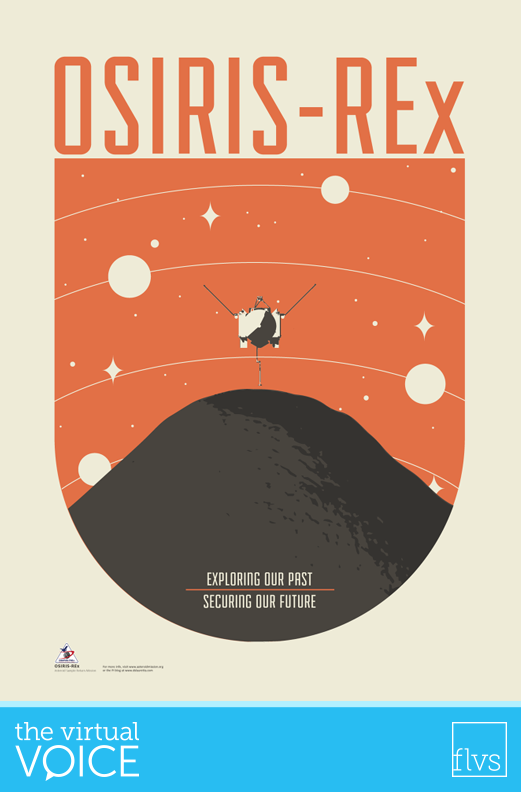STEAM
Saturday Science: Creating Lava Lamps
By Guest Blogger on June 7th, 2019
![]() Find Saturday Science instructions for creating your own lava lamp below!
Find Saturday Science instructions for creating your own lava lamp below!

Saturday Science is a monthly enrichment opportunity for FLVS elementary students and their families.
During these online sessions, we do an experiment together that helps us “see” and better understand various scientific concepts. Experiments are chosen to include materials commonly found at home or the local dollar store. A big emphasis is also placed on selecting experiments that require materials that might otherwise be thrown out after use, such as plastic water bottles, plastic bags, paper towel cardboard rolls, boxes, etc. Elementary students can perform the experiment live during time together or simply watch if they do not have the materials. All sessions are recorded so that if a student misses the “live” event or later acquires the materials, it can be viewed at any time.
As a teacher, it is my hope that Super Saturday Science helps create and/or deepen a love for science and hopefully plants a seed of interest that encourages our elementary students to pursue a career in science! Continue reading
Science Activities for All Ages
By Cara Piper on May 14th, 2018
 Our Kindergarten students LOVE doing science experiments!
Our Kindergarten students LOVE doing science experiments!
Recently we asked them what their favorite part of Kindergarten has been, and many of them said “science experiments.” Some may think that because we are a virtual school, our kids spend all their time on the computer. This couldn’t be farther from the truth!
We get our Kindergarteners into the physical world as much as possible to have the same hands-on learning experiences you would find in a brick-and-mortar school. This year, they have gone on nature walks, made slime, created straw rockets, seen sound waves at work, and discovered how animals stay warm in icy water…just to name a few! Continue reading
FLVS Follows Science on Its Way to Space
By Guest Blogger on April 30th, 2018

On April 2, 2018, the SpaceX Falcon 9 rocket blasted into space with the Dragon spacecraft – sending fascinating science experiments and supplies to the International Space Station.
FLVS was invited to share the experience with our students and followers through social media, including a behind-the-scenes tour of NASA facilities at Kennedy Space Center prior to launch. Continue reading
FLVS Attends GOES-R Satellite Launch
By Florida Virtual School on December 7th, 2016
 On Saturday, November 19, I had the privilege of watching the GOES-R weather satellite launch from Kennedy Space Center.
On Saturday, November 19, I had the privilege of watching the GOES-R weather satellite launch from Kennedy Space Center.
Now you may be wondering what GOES-R stands for. It’s the Geostationary Operational Environmental Satellite, a satellite system that orbits the earth and sends data back to National Weather Service computers. The R indicates what number or version the GOES satellite is on, so there have already been versions A-R. GOES-S is slated to launch next year and is the twin to GOES-R.
Of course, weather satellites get launched all the time, so why would this one be any more special than the others?
Well, right now we receive images of satellite scans every 30 minutes or so. The GOES-R satellite will provide data at least every five minutes, and in some circumstances every 30 seconds! So not only will it be five times faster than current weather satellites, but it will also gather three times more data and it will have four times better resolution. Continue reading
To Bennu and Back!
By Florida Virtual School on September 29th, 2016
 Hello FLVS peeps!
Hello FLVS peeps!
I had the distinct honor of representing FLVS at the OSIRIS REx rocket launch a few weeks ago.
Now if you’re wondering what exactly that means, OSIRIS REx stands for NASA’s Origins, Spectral Interpretation, Resource Identification, Security-Regolith Explorer. That’s a mouthful, right?
In a nutshell, NASA is sending a spacecraft to an asteroid named Bennu. Once it reaches Bennu (after a trip lasting two years), the spacecraft will orbit the asteroid for about a year, find the perfect place to collect about 80 grams of the rock, and head back home, arriving back to Earth in 2023.
It won’t actually land on the asteroid, but instead hover over it – and with the help of Canada and their amazing knowledge of spacecraft arms – will grab a small sample. (To put this in perspective, 80 grams is about the equivalent of 80 Skittle candies.)
So why are we going to Bennu? Continue reading
